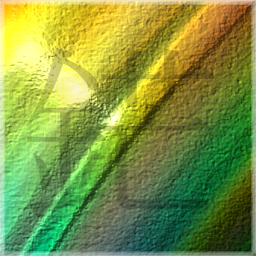mkv is king.
Video, audio, subtitles, chapters - all in one file.
MKV is a container format though, but close enough I guess. 👍 I like it too.
Is .png no good?
PNG is fine. The industry likes to reinvent the wheel every few years so that you have to upgrade everything. It’s ridiculous nonsense.
PNG is good.
I love SVGs. Vector images are interesting and seeing an image stored in readable text and still being so small is really cool to me. It’s also fun to play around with since you can plug html into it and vice versa.
I miss Flash for vector reasons, both for animations and games. My internet is still slow enough to matter, especially with streaming speed/stability issues.
WebGL is a thing but a bit of a mess, especially downloading. Ruffle or using Wick editor are options… but even Newgrounds doesn’t highlight this (unless you find it first and go to info page from there). I assume most animators just render their animations now.
Have tinkered with vertex color (untextured) models in Godot, I see workflow possibilities there (also for 2D to a lesser extent) but good luck if it’s gotta be me. Some chunk of development is also different from the content it allows.
I was only a kid in Flash’s heyday, so I’ve never dealt with it creatively. I didn’t even know it supported vector graphics. You can animate SVGs though, but I don’t know if there’s a good tool for it though. I’ve only ever made SVG animations by hand with SMIL.
Also wouldn’t blender be better suited for vertex colored animations? I feel like in either case the point is lost though since it’ll have to be rasterized eventually.
Also wouldn’t blender be better suited for vertex colored animations?
I make the models in Blender. Animation itself could be done in either, but a mix of the two probably makes more sense (Blender for character animations, in-engine for more dynamic/combined stuff or scenes etc.).
Blender-only would probably be fine if you can export to Blender Game Engine but I’m not sure it’s really a thing anymore. Godot has exports for multiple platforms (also obviously, interactivity). Though anything that could render a scene could work, Raylib or other frameworks/engines.
I feel like in either case the point is lost though since it’ll have to be rasterized eventually.
Not quite. The major point is that it’s being rendered on the user’s computer as-needed rather than the rasterized result being loaded for every pixel on the screen for every frame. The data difference can be huge, particularly as the frames/animations add up.
The most “real” implementation also allows zooming and transformations whereas something like a runtime-rasterized SVG might have ugly pixellation if you do that (haven’t tested Godot’s new SVG oversampling) or even just from bezier conversion with too few points. So I prefer real minimal polygons over rasterized-solution SVGs.
The 3D version of this isn’t even anything exotic. It’s just a 3D game without textures, using old techniques that actually still have some support thanks to being in the 3D formats. It’s an aesthetic choice that is also an optimization.
Oh I didn’t even realize you were talking about games lmao even though you mentioned newgrounds. I was thinking strictly for animation. That makes perfect sense for games.
I did mean both… Newgrounds is known for animation, too. Have you never seen a flash animation?
some random picks
The Ultimate Showdown | Everything You Know is Wrong | ~Cyclic~ (Fan animation for Ruler of Everything)
I Like Trains | Don’t Sleep, Robby!
Ruffle adds a bit of overhead to load times, but not too bad.
AVIF. It’s a video format but it works great for photos too and offers much better compression than jepg or even webp without much noticeable loss. I use it on my blog to make the few images I use as light as possible.
What’s the compatibility like? If someone visits your site using IE 11 does it work? How about Firefox 4.0, or Safari 6.1?
The place I used to work had those compatibility requirements. But they were also still mandating the use of IE 11 for all their corporate software. If you’re designing and developing for IE 11, you often get Firefox 4.0 and Safari 6.1 compatibility for free.
Still, it’s nothing like when I was in uni we needed to design websites with IE 6 compatibility, that will make you question your career choice.
Yep.
It’s not compatible with the real older browsers but since it’s for my personal blog I don’t think it’s a big deal.
deleted by creator
I like svg, as it is basically an ASCII file. And i can manipulate them with sed/grep etc for bulk changes.
GIF and GIF
CIF - Compressed Image File
No particular reason, except that it’s a proprietary format I wrote myself, comparable compression to PNG, but totally different codebase and format.
Obligatory “xkcd standards”
geotiff
fucking fight me.
and if any one posts h5 as their favorite I’ll rip your fingernails off with a pliers.
Do you mean hdf5? I extensively used COGs (cloud optimised geotiffs) and NetCDF4 (based on hdf5) at work over the last 10 years. Both have their pros and cons.
The main limitation with geotiff is its pretty much only usable for layered 2D raster data.
NetCDF4 (hdf5) can set up frames of any dimensionality, you can have datetime axes, time series data, 100d ensemble data, etc.
Yeah. h5 is the typical industry shorthand and file extension.
The h5 saga was NASA saying “we’re going to create a file format that does EVERTHING”, and well… it does… poorly.
Everything that h5 is allegedly better for is better solved by just moving to either sql or postgres. And if the data aren’t that complex, then just send me a geotiff.
If you send me an h5 the first thing I’m doing is moving it over to sqlite or postgres.
HDF5 was designed for multidimensional numeric arrays, which are particularly ill-suited to putting in a classic relational DB.
It’s a scientific data format, not an image format and it sounds like you’re not the intended audience.
Litterally a scientist working with NASA data and it’s scientists and I’m not the intended audience?
I’ve been in the remote sensing game almost 25 years. And a good amount of that at the federal government. I’ve sat at the table and shared beers and dinner with the chief scientists behind the modis and gedi mission. There isn’t a geospatial data type or format I haven’t encountered, and half of them I’ve buried.
So please, spare this old hand any lectures.
The fact is geospatial has been able to explode because we finally got away from these kinds of anachronistic approaches to data. It’s litterally never been a better time to be a geospatial data scientist. Praise be that the age of h5s and local processing is over.
Opus, then AV1
I guess it’s is not video. But video without sound would be missing something.
I also like the capabilities of mkv Container format. Implementing it is not easy though.
M4V for the win.
I never used it in person, but the LFP (light field picture) format used by Lytro cameras was an interesting concept—you could change the focus, depth of field, and perspective after the image was captured.
.mp4 - Only flaw? No subtitles .png - Good compatibility and it scales well
MP4 has upgraded my digital QoL unimaginably, its my unabashed favorite altho i am no expert
.bmp just for the anarchy in me
Highest quality format there is and ever will be.
RAW enters the chat
Is that just straight up hexadecimal or binary code? Both are 100% uncompressed and lossless.
It is the raw data from the sensor of the camera, it has not been processed in any way yet
TIFF 6 and MKV/FFV1v3. Both great for digital preservation.














